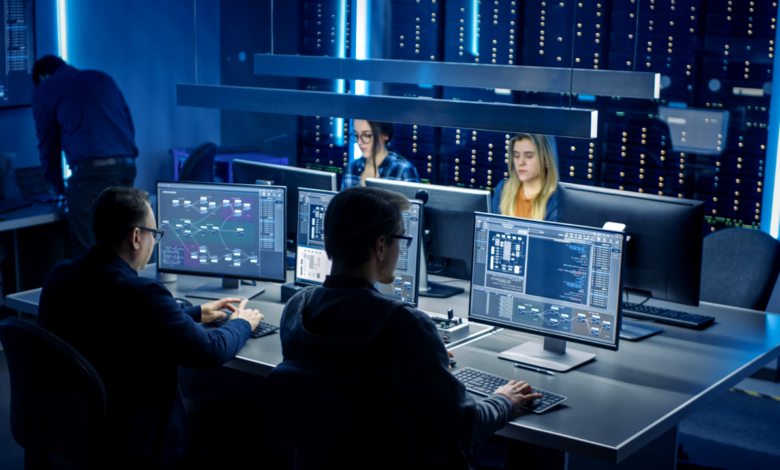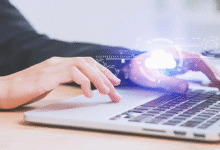How to Manage Cybersecurity with Employees Globally?

Cybersecurity is a $60 billion industry that keeps growing each year. Most companies are very careful to keep their sensitive information and the information of their employees safe. But when you add the rise of remote work over the last 10 years to a global pandemic, it really throws a wrench into what would otherwise be a well-oiled machine.
Statista says that data breaches in the U.S., where they happen most often and cost the most, cost an average of $8.6 million, which is enough to stop your business in its tracks. So, how do you protect your private and confidential information? We’ll find out, but first, why are cybersecurity threats and breaches much more likely to happen at companies that are far away?
- Unsecured Wi-Fi. When a remote worker says they can work from anywhere, they really can. That could mean a coworking space with secure Wi-Fi, but it could also mean a coffee shop, an airport, or a gym. When data from your business is accessed through one of these networks, it is at risk.
- Personal hardware. You might have given your employees company-owned laptops and access to a secure server, but it’s just as likely that they’re doing at least some of their work (if not all of it) from their own devices. This also means that a personal laptop, which is much more likely to be left unlocked and out in the open, can be broken into.
- Inadequate training. If your employees who work from home haven’t been trained in cybersecurity, put it on your list of things to do right away. Talk about VPNs, letting people use their own devices, managing passwords, and encrypting data.
According to Business Tech Weekly, 81% of CIOs said that their company had been hacked through Wi-Fi in the past year, and 62% of those attacks came from cafes or coffee shops. So how do you make sure your remote team doesn’t become a number?
Related: Top 4 Cybersecurity challenges in 2022
Create a cybersecurity response plan
Your remote company could only be safe from a serious cyber attack if you use a weak password. That’s why it’s so important to have a plan for responding to cyber threats. At the very least, your plan should include the basic information from your cybersecurity training, as well as how to spot scams and phishing attempts and what employees should do if they suspect a breach.
Make sure your action plan is complete, that everyone in your organization knows about it, and that it is easy to find when you need it. Set up a “chain of command” for cybersecurity so that employees know where to go if they think they’re a part of a cybersecurity incident.
Adopt a password management system
What do your wedding anniversary, your mom’s maiden name, and the birthdays of your children all have in common? All of these are really bad passwords. Even so, they are some of the most used. Instead of leaving it up to your employees, set up a password management system that will make sure your team has access to the software, tools, and resources they need while keeping your information safe. In addition to a system for keeping track of passwords, remind your employees when they are choosing passwords to:
- Use the system’s suggested password or choose a password that is unique and doesn’t include known personal information.
- Don’t use the same password on different sites.
- Passwords should be changed often.
Related: Cybersecurity: Web-Based Businesses should Automate Content Security Policy in 2022
Use multi-factor authentication
Multi-factor authentication (MFA) makes it so that your employees have to verify their identity before they can access sensitive or restricted information. In the end, they have to show proof that they are who they say they are. Some kinds of MFA are:
- PINs or check-in codes (often sent via SMS)
- Security Questions
- Real-time access requests (an authorized user approves access when requested)
- Biometrics, such as scans of fingerprints, eyes, or faces
- Hardware like key fobs or badges that must be scanned to get to protected information
MFA is changing quickly and expanding into new technologies, so make sure you choose the types of multi-factor authentication for your remote team with the help of a trusted professional.
Make common sense a little more common
Hiring a cybersecurity expert can be expensive (though it’s a good investment), but every remote worker can and should take small steps, especially if you need to make sure your data is safe while you put together a cybersecurity plan. From now on, make sure every employee who works from home does the following:
- Make sure that your personal laptop has a password and that you never leave it unlocked and unattended.
- Put your firewall on.
- Make sure backups are encrypted.
- When working in a public place, use a secure internet connection or, if that’s not possible, a VPN.
No matter how long you’ve been managing a remote team or how new you are to it, the need for better security is always growing. And if your employees work from home, while traveling, or in faraway places, it’s easy for a small hole in the armor to lead to a fatal blow. Keep the tips above in mind when making your cybersecurity response plan to protect your employees and your company’s most sensitive information.











